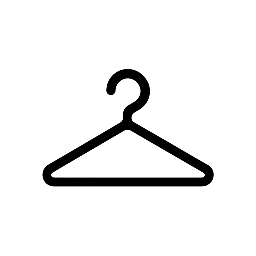
Decluttering isn’t one-size-fits-all. Depending on your energy, time, and emotional attachments to things, certain methods may feel freeing — while others can be overwhelming. Below is a breakdown of the most popular decluttering strategies, along with their pros and cons to help you find your ideal approach.
1. The KonMari Method (Marie Kondo)
Core Idea: Keep only what “sparks joy.”
Pros:
- Emotionally empowering — focuses on what you love, not what you lack
- Creates a deeply personalized space
- Encourages gratitude toward your belongings
Cons:
- Can be emotionally intense or slow, especially if you’re prone to nostalgia
- May feel overly minimalist for people who find comfort in abundance
- Not ideal for neurodivergent folks who struggle with intuitive decision-making
2. The Minimalist Game (30-Day Challenge)
Core Idea: Declutter 1 item on day 1, 2 items on day 2… up to 30 items on day 30.
Pros:
- Gamifies the process — fun and motivating
- Builds momentum over time
- Helps shift daily habits
Cons:
- Can feel overwhelming by the third week (you’ll need to find 20+ items a day!)
- May lead to rushed or impulsive decisions just to “keep up”
- Doesn’t offer time to reflect on emotional attachments
3. Room-by-Room Decluttering

Core Idea: Focus on one room or area at a time.
Pros:
- Practical and manageable — you get clear wins as you go
- Great for people who like structure and order
- Allows for customization based on function (kitchen vs. closet)
Cons:
- Easy to get stuck in perfectionism
- Doesn’t always tackle the root cause (emotional or behavioral patterns)
- Can drag on if you lose motivation mid-way
4. The Four-Box Method

Core Idea: Label four boxes: Keep, Donate, Sell, and Trash — and sort items accordingly.
Pros:
- Simple and visual — makes decision-making easier
- Encourages mindful rehoming of items
- Helps reduce landfill waste
Cons:
- Requires space and storage during the process
- Sorting can take longer than expected
- Some people struggle with “Sell” piles that never leave
5. The 20/20 Rule (from The Minimalists)
Core Idea: If it costs under $20 and can be replaced in under 20 minutes, let it go.
Pros:
- Helps release “just in case” clutter
- Great for clearing drawers, “junk” areas, and backups
- Reduces decision fatigue
Cons:
- Not suited for sentimental or high-value items
- May cause regret for highly frugal people or those on tight budgets
- Can feel wasteful if not paired with conscious disposal (e.g., donation)
6. Decluttering by Category (Not Location)
Core Idea: Sort by category — clothes, books, papers, etc. — instead of room.
Pros:
- Shows the true volume of what you own
- Breaks shopping or hoarding patterns (when you see 30 scarves in one place!)
- Encourages decision-making in context
Cons:
- Can create a mess before it gets better
- Overwhelming if you have a lot in one category
- May not suit people who need quick visual wins
7. Intuitive or Emotional Decluttering
Core Idea: Move through your space intuitively and release items that no longer feel aligned.
Pros:
- Gentle and emotionally aware
- Empowers self-trust and emotional growth
- Good for those doing inner healing or reparenting work
Cons:
- Slow and unstructured — harder to track progress
- May lead to indecision if you’re in a low or foggy state
- Lacks the accountability of a system
8. Decluttering with Timers (Pomodoro Style)

Core Idea: Set a timer (e.g., 15–25 minutes) and declutter without overthinking.
Pros:
- Great for people with low energy or limited time
- Breaks through procrastination
- Easy to fit into daily routines
Cons:
- Doesn’t go deep — more suited to surface-level clutter
- Can lead to shuffling, not discarding
- Progress may be slower overall
Final Thought:
Decluttering is not just about removing items — it’s about creating space to feel more like yourself. Choose a method that supports your energy, values, and emotional rhythms.
Would you like a printable quiz or flowchart to help your readers choose the best method for them? I can create that too!

Leave a Reply